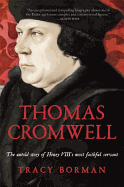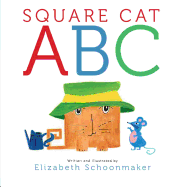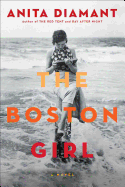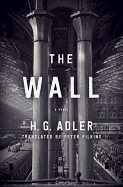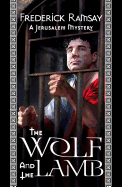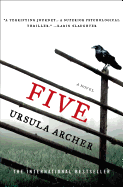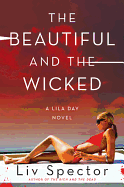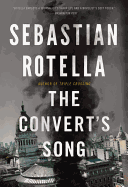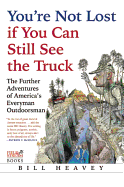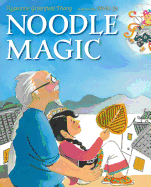Tuesday, December 30, 2014
As the year comes to an end, we'd like to honor a few of the authors we lost in 2014.
Former U.S. poet laureate Mark Strand, "whose spare, deceptively simple investigations of rootlessness, alienation and the ineffable strangeness of life made him one of America's most hauntingly meditative poets." He was named poet laureate in 1990 and won the Pulitzer Prize for Poetry in 1999 for Blizzard of One.
Novelist Kent Haruf, who wrote quiet, moving novels that take place in the fictional town of Holt, Colo. His novel Plainsong (1999) was a finalist for the National Book Award, and his most recent book, Benediction (2013), was on the shortlist for this year's Folio Prize.
Zilpha Keatley Snyder, who wrote nearly 50 books, including The Egypt Game (1967). The New York Times described her as having "mined memories of little demons at the foot of her childhood bed to spin tales of wonder, mystery and suspense that beguiled two generations of children and young adults."
Pulitzer Prize-winning biographer and political scientist James MacGregor Burns, "who wrote voluminously about the nature of leadership in general and the presidency in particular." He wrote more than 20 books, including Roosevelt: The Soldier of Freedom (1970), which won both the Pulitzer and the National Book Award.
 |
|
| Myers | |
Walter Dean Myers, beloved and deeply respected children's book author. In a career spanning over 45 years, he wrote more than 100 books, including two Newbery Honor books, three National Book Award finalists and six Coretta Scott King Award/Honor-winning books.
Memoirist and poet Maya Angelou, "whose landmark book of 1969, I Know Why the Caged Bird Sings--a lyrical, unsparing account of her childhood in the Jim Crow South--was among the first autobiographies by a 20th-century black woman to reach a wide general readership."
P.D. James, the beloved mystery author and creator of Commander Adam Dalgliesh and Cordelia Gray, who famously said, "When I first heard that Humpty Dumpty fell off the wall, I immediately wondered: Did he fall--or was he pushed?"
Screenplay
by MacDonald Harris
Originally published in 1982, Screenplay by MacDonald Harris (The Balloonist) exhibits remarkable sleight of hand with two parallel versions of Los Angeles. Alys was raised in the late 20th century by fabulously wealthy, unconventional parents and orphaned at age 18. With no personal connections and unlimited money to burn, he amuses himself with unusual old books and music and soulless sexual liaisons. An odd old man shows up at his doorstep and requests to rent a room--though no room has been advertised. He introduces himself as Nesselrode, a film producer, and says he can get Alys into pictures.
Soon Alys's tenuous link to modern 1980s L.A. falters as he steps through a screen into black-and-white 1920s Hollywood with Nesselrode as a surly, time-obsessed guide. In this alternate world, he falls in love with a beautiful starlet, but can they make a life together in her time? Or in his?
In addition to the unmistakable overarching reference to Alice's Adventures in Wonderland, Harris's novel recalls the moral questions of The Picture of Dorian Gray and Alys himself could have stepped from the pages of The Great Gatsby. Even with such classics for comparison, Screenplay is a masterpiece of darkly playful cunning. Harris's evocative prose, in Alys's disturbingly clinical, coldly self-indulgent first-person narrative, is both intoxicating and disquieting; the altered reality here is more sinister and sensual, even erotic, than in Carroll's Wonderland. The tension in this memorable and singular dreamscape builds with perfect pacing to an ending that raises more questions than it answers. --Julia Jenkins, librarian and blogger at pagesofjulia
Discover: An enthralling, time-traveling version of Alice, in dual wonderlands of 20th-century Hollywood.
The Boston Girl
by Anita Diamant
Anita Diamant (The Red Tent) delves into early 20th-century Boston as seen through the eyes of a young Jewish woman, Addie Baum. Taking the form of an interview of 85-year-old Addie by her 22-year-old granddaughter, The Boston Girl starts in 1915 when Addie is 16 years old.
She lives in a one-room tenement apartment with her Mameh and Papa and her older sister Celia. Addie's other sister, Betty, lives by herself--Mameh thinks she's a "whore" for moving out before she's married, and Addie misses her terribly. Living in such squalor, with a home life that lacks any joy, Addie spends as much time as possible at school and the library. At school and at Saturday Club--a literary reading group that meets at the library--Addie forges friendships with a circle of girls that will last throughout her life and meets the female instructors who influence her choices and decisions later on.
With the help of her friends, Addie learns how difficult it is to make a mark on the world, due to discrimination against women in the workforce and against Jews in particular. Through her avid interest in reading and writing she lands a job at a newspaper and manages to become her own woman. This rich tapestry weaves together the joys and sorrows of families struggling to cling to old-country ways as their youngest members embrace a new culture with the success that often comes from strong bonds of friendship forged in childhood. --Lee E. Cart, freelance writer and book reviewer
Discover: Colorful family fights, forgiveness and first loves in a young Jewish woman's life in early 20th-century Boston.
The Wall
by H.G. Adler, transl. by Peter Filkins
The life and work of the German writer H.G. Adler (1910–1988) was relatively uncelebrated in the U.S. until W.G. Sebald published Austerlitz in 2001. Sebald wrote in detail about the German concentration camp Theresienstadt, drawing much of his material from Adler's nonfiction book about the camp--Adler was imprisoned there for more than two years and also survived Auschwitz and two labor camps near Buchenwald. This renewed interest in Adler led to the English translation and publication of his first novel, Panorama, the beginning of what has come to be known as the Shoah trilogy, followed by The Journey. Now, with The Wall, all three novels are finally available in English, thanks to translator Peter Filkins who has been at this monumental project (all 1,500 pages of it) for many years.
Like Adler's two previous novels, The Wall is about memory, the Holocaust and bearing witness. Arthur Landau, a Holocaust survivor who now lives in a town like London with his second wife and two children, is coming to grips with his memories and his nightmares. After losing his first wife and family in the war, he's now trying to survive on little money while he writes his Sociology of Oppressed Peoples. His first-person narration goes on for 600 chapterless pages, switching between a stream of consciousness, dreams, what might be imagined and what is actually happening. Adler brilliantly details a tortured man trying to deal with his survivor's guilt and the "wall" to his past he can't seem to breach. --Tom Lavoie, former publisher
Discover: The third and final novel in a modern German author's magisterial exploration of the Holocaust and its impact on one man.
Mystery & Thriller
The Wolf and the Lamb
by Frederick Ramsay
In The Wolf and the Lamb, his third early-first-century mystery starring Gamaliel, Frederick Ramsay (Holy Smoke) boldly sets his story during the week of Jesus's crucifixion. Pontius Pilate, the Roman prefect of Jerusalem, has been arrested for murder, and he calls upon Gamaliel, chief rabbi of the Sanhedrin (the highest council of Jewish law), to prove his innocence.
Gamaliel is reluctant to help the prefect, symbol of the Roman oppression, but he suspects that Pilate has been framed, and his innate honesty will not allow him to stand by as an innocent man is convicted. Gamaliel fears that his peers will scorn him as a collaborator, so he enlists the help of his friend Loukas, a physician, to help him wrap up the case quickly. Complicating matters for Gamaliel and Loukas are the other Roman officials, who are greedily eyeing the Prefect's position, and Caiaphas, the High Priest, who is obsessed with a mystical rabbi known as Yeshua (Jesus). Caiaphas wants Gamaliel to abandon Pilate to his fate, and help him convict Yeshua of blasphemy.
Ramsay walks a delicate line, balancing history and biblical tradition with intriguing fiction to produce a surprisingly believable alternate reason for Jesus's crucifixion. He creatively establishes a scenario that forces Pilate to free the murderer Barabbas, instead of Jesus, in order to save his own skin. The historical detail involved in Gamaliel's investigation makes the story entirely plausible, and will engage both mystery lovers and church-history buffs. --Jessica Howard, blogger at Quirky Bookworm
Discover: Pontius Pilate is arrested for murder, mere days before Jesus's crucifixion.
Five
by Ursula Archer, transl. by Jamie Lee Searle
At the opening of Five, the psychologically disturbing debut thriller from Ursula Archer, Austrian detective Beatrice Kaspary is flustered by her belligerent ex-husband's attempts to gain additional time with their kids, but quickly puts her personal matters aside when she's called to the scene of a murder. Beatrice and her partner Florin Wenninger discover strange numbers and letters tattooed on the bottom of the dead woman's feet and soon realize that they are geographic coordinates. They follow the coordinates and find a human hand in a box, accompanied by a cryptic note they struggle to decipher.
The dead bodies pile up as the detectives follow the murderer's gruesome trail of clues across Austria. Beatrice and Florin are drawn into the world of geocaching as they find hints that lead to stashed horrors--including severed ears and, eventually, a human head. Before the body count can rise further, Beatrice and Florin must outwit the killer and save his intended victims.
For the uninitiated, Archer's explanation of this usually innocuous GPS-based game is clear, and her detectives are believably frustrated as they struggle to figure out the murderer's creepy scheme. When the killer begins texting Beatrice, it's clear that this case has suddenly become very personal. Florin and Beatrice's likeability and the vivid Austrian setting are a pleasant contrast to the grisly crimes and ultimately shocking denouement. This unusual case is bound to inspire more than a few mystery fans to try geocaching in the hopes of finding less-disturbing treasure. --Jessica Howard, blogger at Quirky Bookworm
Discover: A murderer is caching body parts across Austria as detectives race to unlock his clues.
The Beautiful and the Wicked
by Liv Spector
Lila Day used to be a police officer. Now she solves cold cases for Teddy Hawkins, a billionaire who created a time machine. In order to preserve the past and not hurt their present, Lila has to obey Teddy's instructions. The only problem is Lila's not great at following rules. Her passion--the reason she excels at investigating murders--often leads her to make poor decisions and blinds her to the damage her meddling may cause. To avoid disaster, Teddy carefully chooses the cases she works, and any case with a personal connection is strictly prohibited.
Ten years ago, Lila's sister, Ava, was accused of murdering software tycoon Jack Warren, on the night of his 50th birthday. Certain of her sister's innocence, Lila convinces Teddy to send her back in time to find out what really happened the night Jack died. Arriving in the year 2008, she gains employment on Jack's luxury yacht by posing as a stewardess. Lila is quickly thrown into the dramatic and unpredictable world of the glitterati and self-important plutocrats, where she discovers that everyone aboard the ship has a reason to hate Jack and many also possess the means to murder.
From start to finish of Liv Spector's sophomore effort (after The Rich and the Dead), each new piece of information complicates both the plot and relations between characters. Set against the tantalizing backdrop of excess consumption and privilege beyond the scope of most people, The Beautiful and the Wicked is an entertaining whodunit. --Justus Joseph, bookseller at Elliott Bay Book Company
Discover: A passionate detective determined to save her sister from a murder charge travels in time to find the real killer.
The Convert's Song
by Sebastian Rotella
Foreign correspondent and former Los Angeles Times reporter Sebastian Rotella has spent decades covering cross-border crime, drug-trafficking, terrorism and Muslim sects. In 2011, he rolled all this into his first novel, Triple Crossing, an international crime thriller featuring Valentine Pescatore, a U.S. Border Patrol agent from Chicago of Mexican-Argentine-Italian descent. The Convert's Song picks up with Pescatore in Buenos Aires, where Triple Crossing ended. He is working for a local private investigator and trying to get over a love affair with his federal-agent handler from the complicated, brutal undercover operation that ended his Border Patrol career.
In what appears to be a chance meeting, Pescatore runs into his oldest childhood Chicago friend, Raymond, a silver-tongued lothario, occasional drug dealer, failed club singer and recent convert to Islam. When a terrorist attack on a Buenos Aires mall kills 200, a warning phone message from Raymond launches Pescatore into a manhunt for those responsible. He joins the attractive French intelligence agent Fatima Belhaj on a trail that runs through Bolivia, Paris, Spain and finally ends in Baghdad, where he confronts a ruthless Iranian brigadier general in a meeting brokered by Raymond.
His cover blown by Iranian Intelligence, Raymond tells Pescatore his backup plan: "As long as you got something or someone to offer, you can always convert." With an investigative journalist's insider knowledge and a thriller writer's pace, The Convert's Song is a convoluted trip through the world of terrorist cells fueled by drug money and extremism--and the most dangerous player is often any convert who works only for himself. --Bruce Jacobs, founding partner Watermark Books & Cafe, Wichita, Kan.
Discover: Pulitzer journalism finalist Sebastian Rotella's second international crime and terrorism thriller features Valentine Pescatore.
Biography & Memoir
Thomas Cromwell: The Untold Story of Henry VIII's Most Faithful Servant
by Tracy Borman
Much of Thomas Cromwell's controversial life is poorly documented, leaving his story wide open to interpretation. In Thomas Cromwell, historian Tracy Borman (Elizabeth's Women) emphasizes his virtues and accomplishments.
The son of a drunken blacksmith, Cromwell spent much of his formative years abroad and was a soldier, merchant, lawyer and a multilingual polymath before he became the protégé of the equally self-made Cardinal Wolsey. Despite his origins, he rose to become the king's all-powerful first minister in 1532, a position he held for eight years. Cromwell more than tripled the king's revenues and was responsible for the executions of 308 people for treason. He set a pace of religious, social and economic change that eventually outstripped the ambitions of his king and made him popularly despised (but also inadvertently paved the way for the eventual revolution). A political genius and reformist, thoroughly pragmatic, hard-working, charming and brutal, he was raised up and then destroyed by Henry VIII, who married his fifth wife on Cromwell's execution day.
Borman credits the novelist Hilary Mantel (Bring Up the Bodies) for inspiring this version of Cromwell's life, though she has clearly done substantial primary research and includes many vivid quotations from a variety of original letters and other sources. Where there are gaps, she bridges them with uncorroborated material, sometimes offering more than one possible version of events, but always maintaining the rapid momentum of her story, every page thick with fatal intrigue. --Sara Catterall
Discover: A dramatic and sympathetic biography of the blacksmith's son who became the king's right hand and remade England.
Humor
You're Not Lost If You Can Still See the Truck: The Further Adventures of America's Everyman Outdoorsman
by Bill Heavey
In his third volume of collected works, You're Not Lost If You Can Still See the Truck, Bill Heavey (It's Only Slow Food Until You Try to Eat It) mainly draws from his work in Field & Stream, where he serves as editor at large. Spanning 26 years, these pieces focus largely on fishing, hunting and general outdoor antics, but occasionally touch on more personal subjects, such as fatherhood, divorce, grief, health and family. Self-deprecating humor is clearly Heavey's greatest strength (especially refreshing, given the hyper-masculine hobbies under consideration), and the bulk of this collection is laugh-out-loud hilarious, but he demonstrates a distinct ability for gravity when called for, which adds a welcome note of complexity. For example, "Can I Tell You Something?" soberly explores the reasons some hunters and fishermen cease to enjoy certain aspects of their sports.
Heavey provides tongue-in-cheek critiques of the outdoor enthusiast's retail market, tells charmingly and sometimes embarrassingly funny stories of his escapades and generally exhorts the reader (presumably an everyman or -woman like the author) not to take himself too seriously. His satisfyingly personal tone renders him a fully developed figure--a friend, even. The collection is more than the sum of its parts, tracing the arc of an amateur becoming a seasoned outdoorsman (though not an expert, as Heavey would be quick to point out), with examples of his persistent incompetence. Enjoyment of the entertaining result does not require a love of hunting or fishing. --Julia Jenkins, librarian and blogger at pagesofjulia
Discover: Brief doses of amusing, thoughtful and compassionate reflections on outdoorsmanship.
Performing Arts
Blue-Collar Broadway: The Craft and Industry of American Theater
by Timothy R. White
Historian Timothy R. White considers an unexamined intersection of urban history and theater history in Blue-Collar Broadway: The Craft and Industry of American Theater. Broadway as his subject is both a geographical area in New York City and a representation of theater in the United States; his focus is the crafts and trades that have supported Broadway in both its meanings over the years.
As White shows, for every singing, dancing actor who treads the boards, myriad supporting players are necessary. Stagecraft covers the craftspeople (carpenters, painters, seamstresses, milliners, costumers and designers) who produce the backdrops, painted scenery, furniture, drapes, props, costumes, wigs and makeup, working with a variety of raw materials, including lumber, paint, fabric. Later in history, lighting and sound riggers and technicians joined this list (in fact, the arrival of electric lighting prompted improvements in costumes and scenery, since they could now be seen clearly). These craftspeople were then challenged by the ascension of alternate media (radio and, to a lesser extent, film and television) to find new roles.
Blue-Collar Broadway details these trades, their history and their products, and the industrialization and unionization that came with the concentration of theater in New York City's Broadway district. He also offers new explanations for patterns of crime and prostitution in Times Square's recent past, using the context of theater craft. His voice is academic and no-nonsense; any fan of theater history, economics, the patterns of New York City or general urban history will find his meticulous research stimulating. --Julia Jenkins, librarian and blogger at pagesofjulia
Discover: A comprehensive academic study of the industries behind theatrical Broadway.
Children's & Young Adult
Noodle Magic
by Roseanne Thong, illus. by Meilo So
Young Mei learns from her beloved Grandpa Tu, master noodle maker, how to find the magic within her and follow in his footsteps, in this story of family, apprenticeship and finding one's calling by Roseanne Greenfield Thong (Round Is a Mooncake).
Grandpa Tu makes "magic with his hands and a bit of dough." Mei watches as he conjures cats, birds and flying fish with his noodles. "If only I had your gift," Mei tells him. "I think you just might," her Grandpa replies. On the day before the emperor's birthday, Grandpa helps Mei slap, knead and stretch the dough. "The rest is up to you," he urges. "Trust in yourself, Mei." Even the Moon Goddess, whose help Mei seeks, tells her, "magic must come from within." Meilo So's (Brush of the Gods) thriving city streets resemble theatrical backdrops as Chinese villagers prepare for the emperor's birthday. Women hang fish from line stretched over balconies, a man plays music on the corner, and a mother carrying a child on her back balances a chicken, flowers and more on a bamboo pole. Colors crowd but never overwhelm the pages, like banners and confetti suggesting a festive atmosphere.
In words and pictures, Thong and So convey the unbeatable combination of faith and hard work. Mei gets strong guidance from Grandpa Tu and the Moon Goddess, but she must not only make the necessary preparations (slap, knead, stretch), she must also believe in herself. --Jennifer M. Brown, children's editor, Shelf Awareness
Discover: A child's wish to follow her grandfather's vocation and her path to believing she can.
Square Cat ABC
by Elizabeth Schoonmaker
A fashionable boxy cat in a green gardening hat leads readers through the alphabet in this stylish primer.
"Amazing!" cries a blue mouse with a pink tummy, sliding down the side of a tomato-red capital A in Museo type (which, appropriately, flaunts a bit of a tail at the ends of each letter). "A big square/ cat is.../ digging in the dirt!" the mouse continues. The "b," "c" and "d" at the start of each line appear as large red lower-case letters. The mouse, upon learning that the cat is gardening, exclaims "Hooray!" while swinging by its tail from the capital H's handy crossbar. The humor of Schoonmaker's comedy arises from her narrative timing and the visual contrast between the mouse's exuberance ("Do you grow spinach? It's my favorite") and the cat's deadpan expressions ("Ick! I grow all vegetables, but I don't like spinach"). With the mere tilt in the line of the eyebrow or mouth, the cat says it all. (Meanwhile, the mouse juggles spinach leaves.) Readers learn that the mouse is afraid of porcupines, and the cat's name is Eula. The mouse overcomes its fear of the porcupine long enough, however, to unite in urging Eula to try spinach. Will she like it? (Hint: the answer is tied to the word for Z.)
Schnoomaker's deceptively simple compositions make great use of white space, keeping the emphasis on the unlikely friends and the bright red letters that lead children through the alphabet. A funny, surprising twist on a concept book. --Jennifer M. Brown, children's editor, Shelf Awareness
Discover: A fresh take on the alphabet involving unlikely friendships, unusual food preferences and a generous helping of humor.



